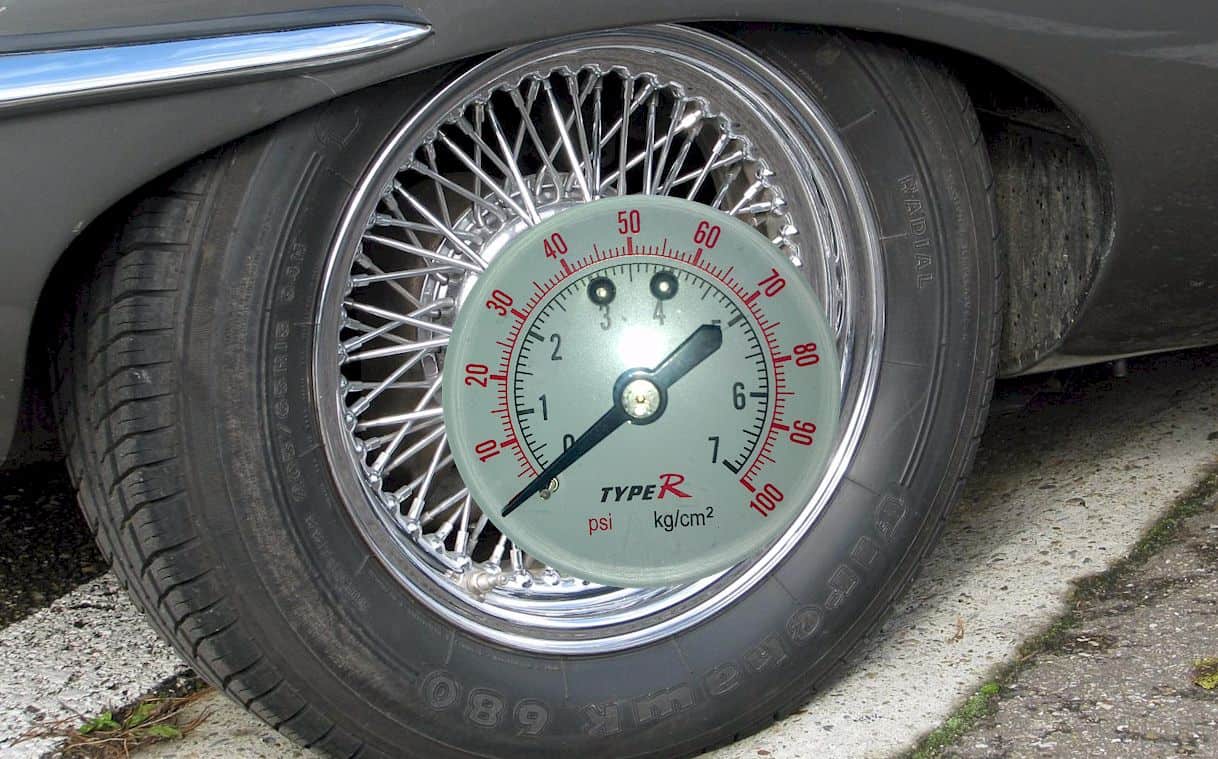
Your car dealer will have one, and some independent repair shops might as well. This device knows which wheel is which because it's held next to each valve stem in turn as the system is programmed. For most vehicles, it involves the use of a special tool that communicates with the vehicle and the sender to make everybody play nice. That's why there is a procedure to resynchronize the system. Eventually, those tires could change position, through normal tire rotation or as the result of a flat. The TPMS is initialized with the position of the four (or five) tires when the car is new. On many vehicles, there's even a sender on the spare tire. And that keeps individual wheels on each corner of the car properly sorted in the TPMS's tiny little brain.
#Flat tire psi serial number#
Every few minutes, the TPMS will interrogate the senders in the wheels, acquire a "true" pressure reading and transfer the message to the in-car display.īut what's to keep the system from reporting the tire pressure of the car next to you at a traffic light? In order to keep things straight, the individual senders have a unique serial number to transmit to the vehicle. Higher-end vehicles use a direct-reading system of battery-powered senders mounted inside the tire, communicating with the TPMS by means of small antennas in each wheel well. There is a much better (read: more expensive) technology to monitor tire pressures. Media Platforms Design Team The Better Way If the system isn't reset this way, TPMS warning lights will also crop up after a normal tire rotation, or if you're replacing tires with ones of a different size from the old ones. Persistent TPMS warnings can often be cured by setting the tire pressures properly and then resetting the TPMS somewhere in the menu on the driver's display, or perhaps with a scan tool. The procedure varies from vehicle to vehicle, and this one won't necessarily work on yours. You can reset the system to allow for wear when all the tire pressures are correct. Properly inferring tire pressures this way can be a problem when the tires are unevenly worn, or if you replace only two worn tires instead of all four.
#Flat tire psi code#
The indirect type of system is inexpensive, because the only real part that must be added to a car is the display on the dash and some extra code in the vehicle's operating system. If one tire rotates more than the other three, it has a shorter rolling radius because the pressure in it is low. If all four tires are properly inflated, they will all rotate the same number of revolutions in a stretch of road.
#Flat tire psi software#
Indirect systems use only software and readouts from the individual wheel-speed sensors used by the antilock brake system. There are two types of TPMS on the market, direct-reading and indirect. Once you understand how your TPMS system works, you'll understand why it doesn't obviate the need for regular tire-pressure monitoring.
Play icon The triangle icon that indicates to playīottom line: Don't trust the TPMS. The TPMS warning light is only required to illuminate when the pressure gets 25 percent below the correct value, which is enough to reduce fuel economy, lower the available grip (especially in wet conditions) and make tires run substantially hotter. Yet, here's the scariest part: If your tires are low, even falling into that minus 20 percent category, your TPMS won't tell you-ever. Worse yet, they say that 20 to 50 percent are being driven with tires down in pressure by as much as 20 percent. Be PreparedĪ Department of Transportation study dating back to 2001 says that 60 to 80 percent of cars on the road are running tires underinflated by as much as 10 percent. 2: The TPMS light remains on after you top off the tires to the correct pressure, at least until you can get a replacement tire mounted later in your trip. The TPMS light is on, and you stay well under the speed limit until you can check the tire pressures with a gauge. What happened?Īfter swapping in the spare, you continue your trip at a more sedate pace. The desert beckons, and 40 miles of heat-shimmered asphalt later, a tire blows. The tires on your crossover are fine though, because all new cars have a tire-pressure monitoring system that will tell you if your tires are low from the comfort and safety of your driver's seat. You pull in for gas and lunch, and carefully check the pressure in the trailer tires with the gauge that lives in your glovebox. Fortunately, the new car you bought right before that Arizona spring-break road trip has air conditioning that works great, in spite of the heavy pop-up trailer and loaded roof rack weighing it down.

But you still need to keep a decent tire gauge in your glovebox. This TPMS sensor uses a lithium battery with a five- to 10-year life span.

When this warning lamp illuminates on your instrument panel, at least one of your tires is 25 percent below its correct pressure.


 0 kommentar(er)
0 kommentar(er)
